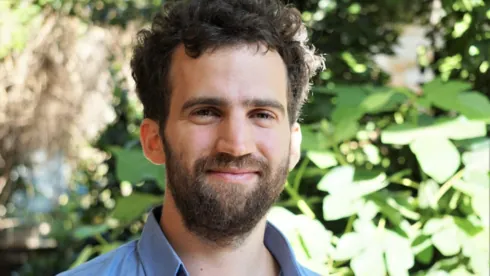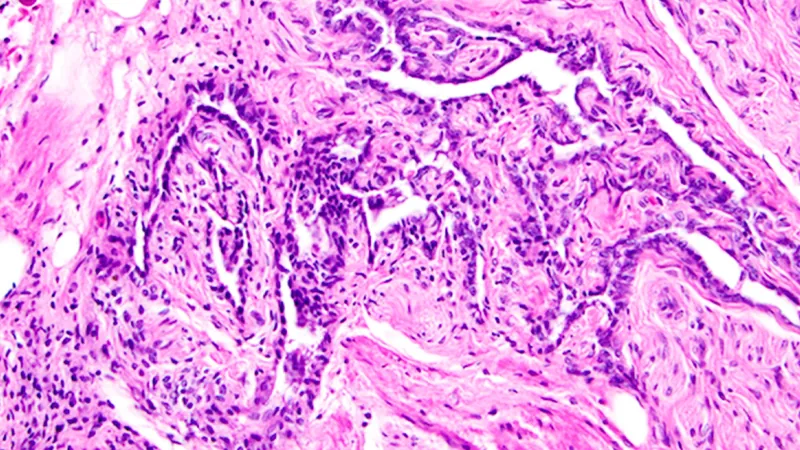
Israeli Scientist Unveils Black Hole Mysteries with NASA Fellowship: This Week in Space
2025-04-11
Author: Nur
Unlocking the Secrets of Black Holes
Astrophysics just got a jolt as Dr. Itai Linial, a trailblazing theoretical astrophysicist from Israel, secures a coveted NASA fellowship under the prestigious Edwin Hubble Astrophysics Fellowship Program. This honor places him among just 24 elite researchers selected from a staggering 700 applicants this year.
Currently based in New York for his postdoctoral research at Columbia University and the Institute for Advanced Study in Princeton, Linial dives deep into the exhilarating world of high-energy astrophysics, grappling with cataclysmic events like the violent destruction of stars by black holes.
The Einstein Fellow and His Groundbreaking Research
Linial's designation as one of nine Einstein Fellows allows him to embark on three years of fully funded research at New York University, focusing on fundamental cosmic questions. His academic journey began at the Hebrew University of Jerusalem, where he delved into the early radiation from supernovae under the guidance of Prof. Re'em Sari.
Looking ahead, Linial anticipates testing his theories with data gathered from Israel's forthcoming ULTRASAT space telescope, currently being developed at the Weizmann Institute. His research now centers on a rare cosmic phenomenon known as Quasi-Periodic Eruptions (QPEs), which are brief yet intense X-ray flares that recur every few hours.
The Mystery of Quasi-Periodic Eruptions
Exploring QPEs, Linial posits that these bursts are triggered when a second star interacts with an accretion disk formed from leftover gas surrounding a black hole. Recent observations during a stellar disruption seem to validate this groundbreaking theory, highlighting Linial's capacity to contribute significantly to our understanding of black hole behavior.
"Receiving this fellowship is a tremendous honor for me," Linial expressed. "It's a unique chance to spearhead my inquiries, collaborate with leading scientists, and immerse myself in a fast-evolving field. I aspire to be at the forefront of significant cosmological discoveries in the coming years."
Exciting Developments in Space Missions
In other thrilling news, SpaceX's Dragon Resilience spacecraft launched on the Fram-2 mission, carrying four private astronauts on the first crewed flight maintaining a polar orbit over both of Earth's poles. Commanding this diverse crew is Chinese billionaire Chun Wang, along with experts in various fields from Norway, Germany, and Australia.
Set to last five days, the Fram-2 mission is packed with scientific experiments, particularly observing polar environments, and boasts a specially designed observation dome for unique imaging. Among the onboard experiments is a compact autonomous lab by Israeli company SpacePharma, which is now testing therapeutic antibody crystallization in microgravity.
A Legacy in Space: The End of the Gaia Mission
The European Space Agency has officially concluded the Gaia space telescope's mission after an impressive 12 years, shutting down its instruments due to depleted resources. Located about 1.5 million kilometers from Earth, Gaia has provided unmatched precision in sky mapping.
Despite its deactivation, the scientific community emphasizes that Gaia's legacy continues. Prof. Shay Zucker of Tel Aviv University notes, "Gaia is a foundational tool for research extending from the solar system to far-flung galaxies." The profound findings from Gaia will fuel scientific inquiry for many years to come.
The Hidden Perils of Space Travel: Bone Loss Unveiled
A new NASA study reveals the alarming extent of bone loss during extended space missions. In a groundbreaking experiment aboard a SpaceX Dragon spacecraft, female mice spent 37 days in microgravity—the longest rodent study in space to date—highlighting that bones in space undergo alarming degradation.
Scientists examined the femur bones of the space mice, discovering significant damage compared to control groups on Earth. While even limited movement on Earth caused bone loss, it paled in comparison to the corrosive effects of microgravity.
This research spotlights critical issues facing astronauts on long missions, stressing the need for effective countermeasures like resistance-based exercise to mitigate bone loss. The stark disparities in bone density between spacefaring and Earth-bound mice underline the urgent need for strategies to uphold astronaut health during protracted stays in orbit.



 Brasil (PT)
Brasil (PT)
 Canada (EN)
Canada (EN)
 Chile (ES)
Chile (ES)
 Česko (CS)
Česko (CS)
 대한민국 (KO)
대한민국 (KO)
 España (ES)
España (ES)
 France (FR)
France (FR)
 Hong Kong (EN)
Hong Kong (EN)
 Italia (IT)
Italia (IT)
 日本 (JA)
日本 (JA)
 Magyarország (HU)
Magyarország (HU)
 Norge (NO)
Norge (NO)
 Polska (PL)
Polska (PL)
 Schweiz (DE)
Schweiz (DE)
 Singapore (EN)
Singapore (EN)
 Sverige (SV)
Sverige (SV)
 Suomi (FI)
Suomi (FI)
 Türkiye (TR)
Türkiye (TR)
 الإمارات العربية المتحدة (AR)
الإمارات العربية المتحدة (AR)